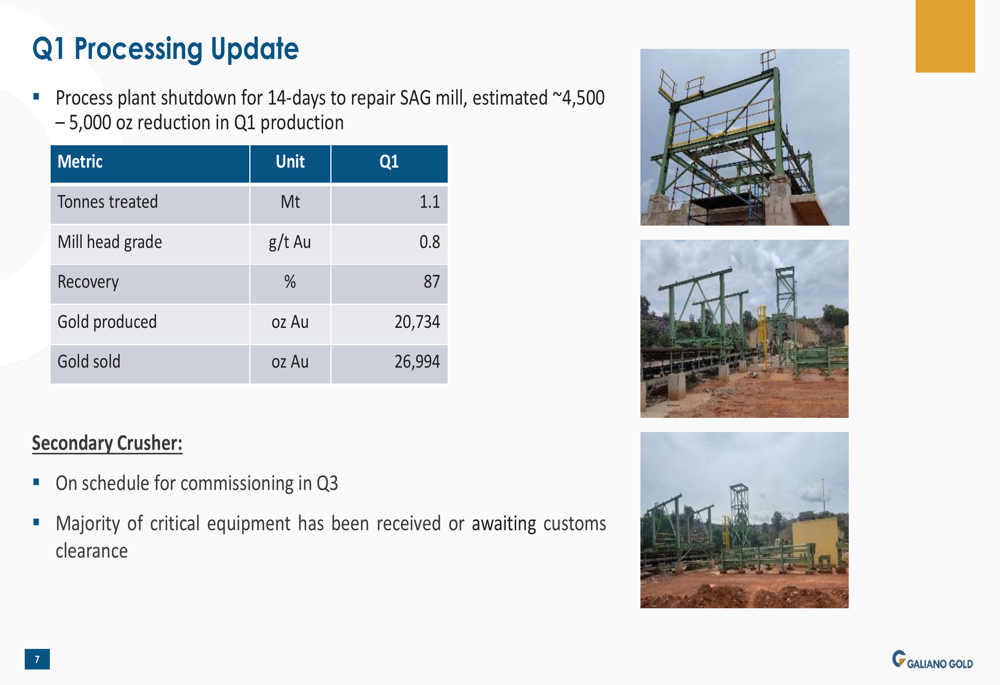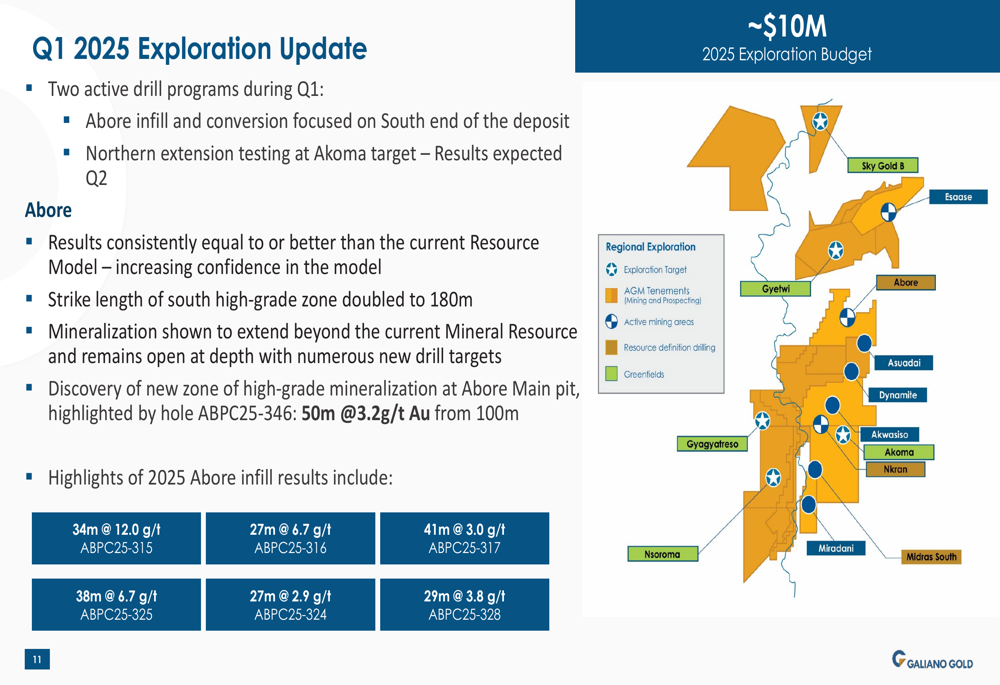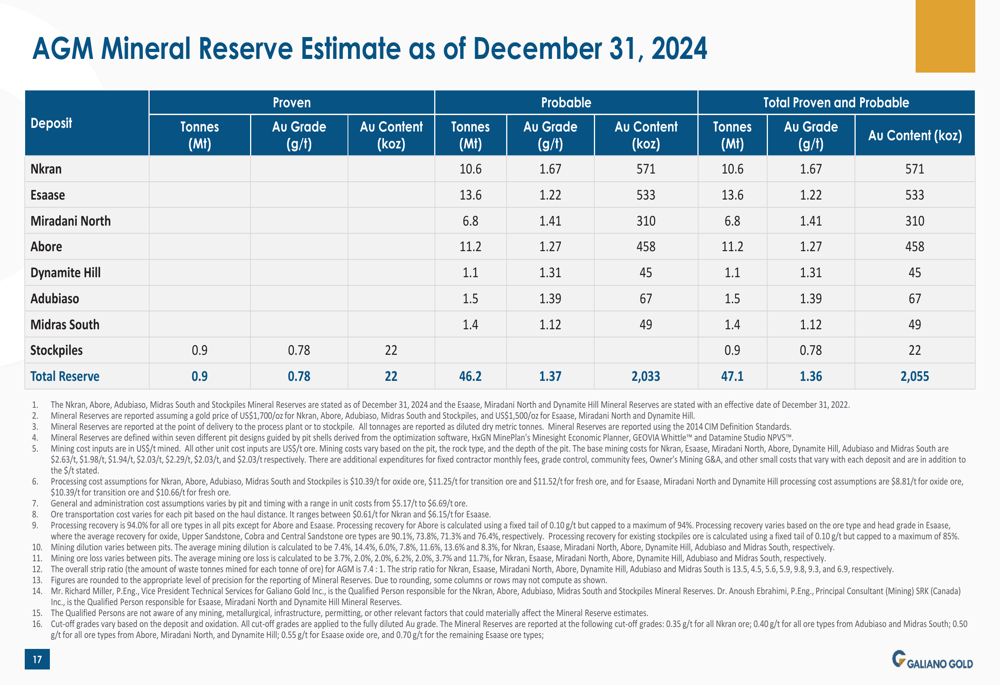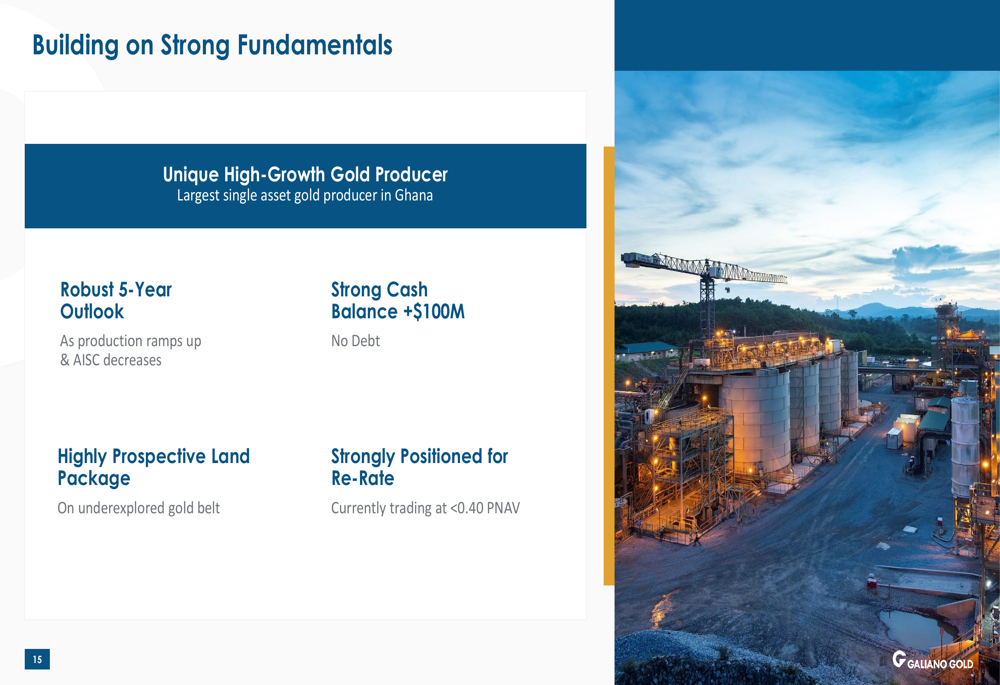Robinhood shares gain on Q2 beat, as user and crypto growth accelerate
Introduction & Market Context
Galiano Gold Inc. (NYSE:GAU) released its Q1 2025 results on May 15, showcasing a company in transition as it balances current operations with significant development work aimed at future growth. The gold producer, which operates the largest single gold asset in Ghana, maintained a stable financial position despite facing some operational challenges during the quarter.
The company’s shares have retreated 6.94% to $1.34 following the presentation, as investors digest both the temporary production constraints and the substantial growth potential outlined in the company’s updated five-year outlook.
Quarterly Performance Highlights
Galiano reported gold production of 20,734 ounces for Q1 2025, with sales of 26,994 ounces at an average realized price of $2,833 per ounce. The company generated revenue of $76.6 million, resulting in income from mine operations of $15.4 million and EBITDA of $25.6 million.
Production during the quarter was impacted by a 14-day shutdown of the processing plant to repair the SAG mill, which the company estimates reduced Q1 production by approximately 4,500-5,000 ounces.
As shown in the following financial metrics summary:

Despite the temporary production challenges, Galiano maintained strong operational cash flow of $25.9 million, demonstrating the underlying profitability of its operations even during a period of reduced output.
Operational Updates
Galiano’s Q1 operational activities centered around three key mining areas: Abore, Esaase, and the commencement of waste stripping at Nkran cut 3, which began ahead of schedule in February 2025.
At Abore, the company mined 0.7 million tonnes of ore at an average grade of 0.9 g/t, representing a 32% increase in ore tonnes compared to Q4 2024. The strip ratio was significantly reduced by 54% to 7.5:1. Operations at Esaase recommenced with 0.6 million tonnes of ore mined at an average grade of 0.8 g/t and a strip ratio of 5.1:1.
The processing plant treated 1.1 million tonnes at a head grade of 0.8 g/t with a recovery rate of 87%. The company also reported that its Secondary Crusher project remains on schedule for commissioning in Q3, with the majority of critical equipment either received or awaiting customs clearance.

Cost control measures showed positive results during the quarter. Mining costs at Abore and Esaase improved slightly to $3.31 per tonne from $3.41 per tonne in Q4 2024. Processing costs decreased to $14.37 per tonne from $15.84 per tonne, while G&A costs improved to $5.78 per tonne milled from $6.28 per tonne in the previous quarter.
However, All-in Sustaining Costs (AISC) were reported at $2,501 per ounce, higher than the company’s previous guidance range of $1,975-$2,075 per ounce mentioned in their Q3 2024 earnings call. This increase reflects the development activities and capital investments being made to support future production growth.
Exploration Success
One of the quarter’s highlights was Galiano’s exploration success at Abore, where 5,543 meters of infill drilling revealed a new high-grade zone below the current Mineral Reserve pit shell. Notable intercepts included 50 meters at 3.2 g/t gold from 100 meters depth, as well as other impressive results such as 34 meters at 12.0 g/t and 38 meters at 6.7 g/t.
These exploration results are particularly significant as they suggest potential for resource expansion and higher grades in future mining phases at Abore.
The following exploration update illustrates the company’s drilling progress and significant intercepts:

Galiano has allocated approximately $10 million for exploration in 2025, underscoring its commitment to resource expansion and extending mine life. The company is also conducting drilling at the Akoma target, with results expected in Q2.
Financial Position
Galiano maintained a strong financial position with $106 million in cash and cash equivalents as of March 31, 2025, and no debt. While this represents a decrease from $123 million in Q2 2024 and $121 million in Q3 2024, the cash balance has stabilized since Q4 2024, which also stood at $106 million.
The following chart illustrates the company’s cash balance trend over recent quarters:

This financial stability provides Galiano with significant flexibility to fund its development activities, particularly the waste stripping at Nkran cut 3, which incurred $3.2 million in capitalized development costs during Q1. The company also invested $3.3 million in other development capital expenditures and $1.3 million in sustaining capital.
Forward Outlook
Galiano’s updated five-year outlook projects a substantial increase in production, with output expected to rise by approximately 75% from 2024 levels over the next 20 months. This growth will be driven by the development of Nkran cut 3, where further mobilization of contractor mining equipment is expected throughout 2025, resulting in higher mining volumes in 2026.
The company’s mineral reserves and resources remain robust, providing a solid foundation for this growth trajectory. As of December 31, 2024, Galiano reported total proven and probable reserves of 47.1 million tonnes at an average grade of 1.25 g/t gold, containing 1,891,000 ounces.
The mineral reserve estimate breakdown by deposit is shown below:

Additionally, the company’s total measured and indicated resources stand at 83.9 million tonnes at an average grade of 1.36 g/t gold, containing 3,668,000 ounces, with further inferred resources providing additional upside potential.

Galiano’s management highlighted several key strengths that position the company for a potential market re-rating, including its status as the largest single asset gold producer in Ghana, its robust five-year production outlook, strong cash balance with no debt, and its highly prospective land package on an underexplored gold belt.

As Galiano progresses with its development plans at Nkran and continues to advance exploration at Abore and other targets, investors will be watching closely to see if the company can deliver on its promised production growth while maintaining cost discipline in the coming quarters.
Full presentation:
This article was generated with the support of AI and reviewed by an editor. For more information see our T&C.
